Millions of women around the world are celebrating 'World Hijab Day' today.
The annual event which started in 2013 aims to recognise women who choose to wear the Muslim headscarf.
While the hijab is a visible symbol of their religion it also represents modesty which is required by Islam.
However, in most Western countries Muslim women are free to decide how they want to dress and wearing the hijab is a personal choice.
Fatimah Jafar, a 13-year-old second year student at St Tiernan's Community School in Dublin, started to wear the hijab last year.
"I wear it every day when I am outside," she said, adding that it is her choice to wear it.
While she has never encountered any negative response to this visible symbol of her religion, she is aware of other Muslims being subjected to insults.
She feels fortunate that her peers are not afraid to ask questions about her hijab.
"I mean it is good as people don't make you feel uncomfortable while you are walking around and they respect you and your opinions, and that's nice."
With significant numbers of young Muslim girls growing up in Ireland, they have noticed that more diversity in the classroom and open discussion on minorities has helped to make them feel more included.
Fatimah thinks that, overall, Ireland is a good place for a Muslim girl to grow up.
Layan Bakadam, a third year student at St Tiernan's, is aware that her experience is quite different to that of her parents, with the rules around Islam being stricter in Muslim countries.
"My family grew up in Saudi, that is where I am from. So, it is different because here, I can meet my friends I can go out more.
"My parents, they had a lot of restrictions so they would stay home a lot. And I can go out. I feel more safe going out than they did when they were younger."
Her school friend, Istabraq Eliwa reflects on a similar experience and how surroundings and where you choose to live as a Muslim has an impact.
"My parents didn't grow up here. They grew up in Egypt, I am Egyptian, so they grew up with most people Islamic. Maybe they didn't know as much about being a Muslim as me. It is more cultural over there than here."
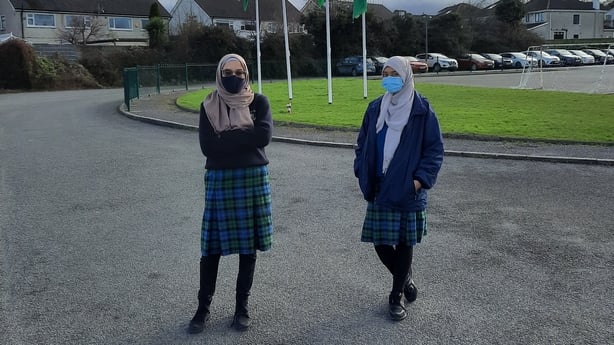
Both girls describe the significance of the hijab as something that makes them feel "safe" while also being prepared to approach the concerns some non-Muslims might have about it.
"It does come up in conversations sometimes, my friends get a little interested," explained Layan.
"It makes me happy as I get to explain it to them from my point of view. I feel some people have a negative view on Islam and I feel when I explain it to people, they think it is, like, positive."
Istabraq acknowledges that the hijab can put some girls at more risk of negative comments than teenage Muslim boys without that same visibility of their religion.
However, she also believes that having a more diverse mix of cultures and religions in the classroom can greatly reduce the risks of prejudice.
"There is a lot of different cultures in my year and class," she said. "There are people from all over the world. I think diversity is very important."
First year student Sara Alain attends a school with 14 different nationalities.
For her, it a challenge being the only Muslim girl.
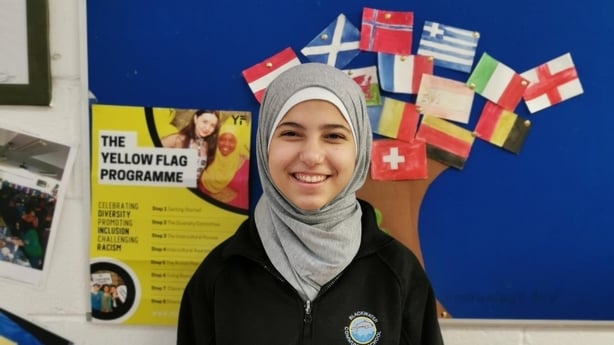
"It is nice to have mixed cultures. But for me it is difficult as I don't like to be different. I like to be normal. But here I am just the girl who wears the hijab in the whole school."
She welcomes conversations sparked by her headscarf as it gives her an opportunity to explain its importance to her classmates at Blackwater Community School in Lismore.
"They ask questions....it is nice," she laughed. "They want to learn so I am the teacher."
In Naas in County Kildare, third year Muslim students who attend St Mary's College, describe the sense of enjoyment and empowerment associated with the hijab.
"It feels quite empowering to wear the hijab because from a young age there are often a lot of negative attitudes towards us," said 15 year old Sabiha Hossain.
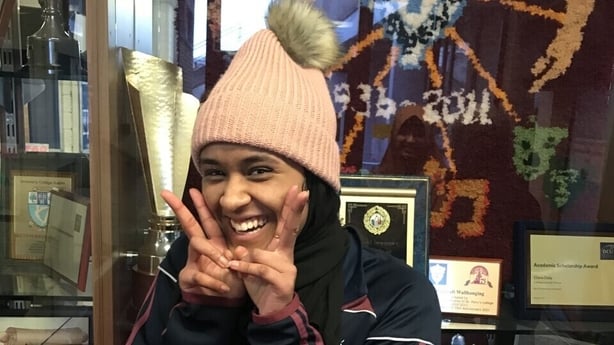
"So, it takes a lot of courage and willpower to wear it and I am glad I have that."
She also said there can be some fun in choosing a hijab as it is part of an outfit.
"There are lot of different hijab styles you can wear, ready-made or a scarf which I am wearing right now. So, it is nice to pick and match."
Sabiha says she appreciates that Ireland "is not necessarily focused on one religion" and there is a lot of freedom and choice for people of lots of races, cultures and religions "to do what they want".
She would not rule out living in a Muslim country when she is older but would also consider staying in Ireland.
"I wouldn't mind living in Ireland as I haven't experienced any hate so far, so I am super grateful for that. "
Her classmate, Tasnuva Ahmed recalls fondly when she first decided she wanted to wear the hijab at the young age of six or seven.
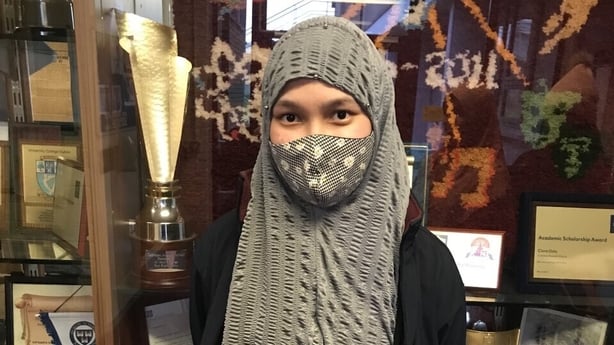
"I saw my mum wearing it" she remembers. "And I thought it was really nice and it looked really pretty. So, I would get little ones from the shop with little designs and I really liked it, so I kept wearing it."
For Maisa Uddin, the hijab has simply become part of her daily routine.
"I go for whichever one I think would suit best for that day."
She said when they were younger more questions were asked, such as "what is that on your head?", but she believes Irish people are now more comfortable with it.
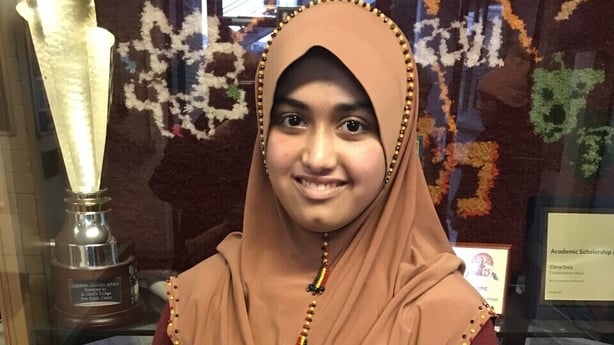
These students are thankful their school, which still has a strong Catholic ethos, welcomes all religions and ethnicities.
103 schools part of the Yellow Flag Programme
St Mary's College along with St Tiernan's and Blackwater Community School are some of 103 schools nationwide that are part of the Yellow Flag, a programme that supports schools to ensure all students have a positive experience.
"School should not be a place where students need to hide their identity" said Molly Brady Martin, National Coordinator of the Yellow Flag Programme.
"Unfortunately, that is not always the case for all students from minority ethnic groups who can face bullying and racism in the schoolyard, in the classroom and the school in general.
She explains how Yellow Flag offers practical frameworks for schools to become more inclusive of all ethnicities, cultures and religions.
She said with over 4,000 schools around the country, the benefit of more state investment would allow more schools partake in this programme and lead to a " trickle-down effect across all of society."
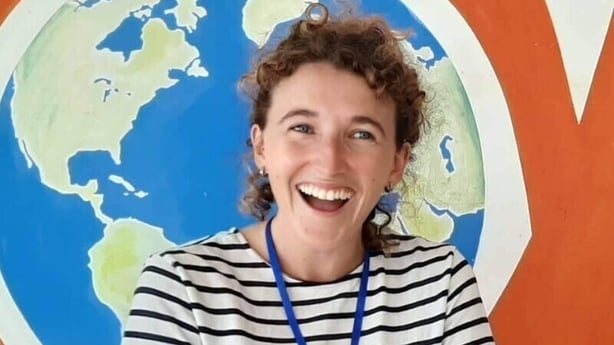
"If we are going in at the school level and we are talking to young people about difference and introducing them to different cultures, we are building knowledge and understanding about other people and other cultures which builds tolerance and respect across society."
Danny Dockery, a history teacher and equality officer at St Tiernan's in Dublin has witnessed this positive effect.
"Sometimes I start a lesson and have to sit down for five minutes and let the students take over.
"They are brilliant at understanding one another in ways I don't even know about, and they really get each other.
"It is that kind of exposure, the interactions they have inside and outside of school that gives them that understanding, and it makes it a much healthier learning environment."






